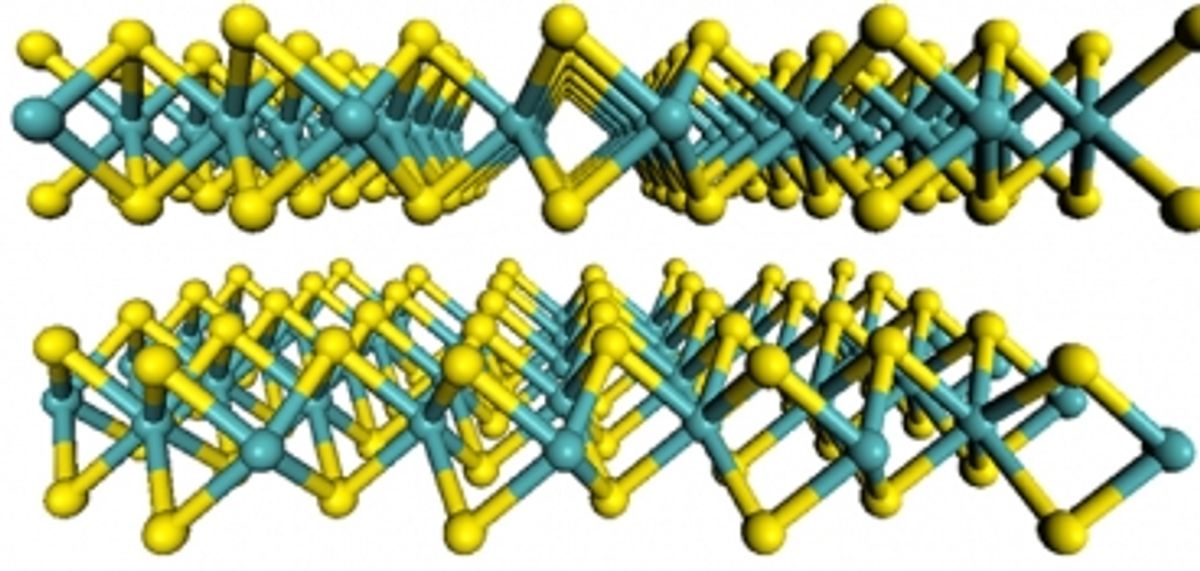Since that time, research has been hotly pursuing the use of this abundant mineral for electronic applications since not only does it possess some of graphene’s attractive qualities, but it brings them to the table with a band gap, unlike graphene. So attractive has this material become that even the discoverers of graphene are now focusing much of their research into using MoS2.
Now researchers at MIT, who have struggled to get graphene to do anything in electronics except for some radio-frequency applications, have turned to MoS2 and have quickly managed to get the one-atom-thick material to serve as the basis for a variety of electronic components.
The research, which was published this month in the journal Nano Letters ("Integrated Circuits Based on Bilayer MoS2 Transistors"), produced an inverter, a NAND (Negated AND) gate, a memory device and a ring oscillator using large sheets of the MoS2.
The MIT researchers believe that this list of electronic components is only the beginning of what is possible with the material. One of the researchers, Tomás Palacios, Associate Professor in the Department of Electrical Engineering and Computer Science, believes that the material could find early applications in large-screen displays in which a separate transistor would control each pixel of the display.
Palacios further notes in the MIT press release that the MoS2 when used in combination with other 2-D materials could make light-emitting devices that could be made to make an entire wall glow, making for a warmer and less glaring light that comes from single light bulbs.
This work certainly seems to promise a far greater range of applications for the material than the EPFL research initially indicated. At that time, the Swiss researchers believed the material would probably see use as a complement to graphene in applications that required thin and transparent semiconductors. It seems now the material has much greater promise.
Dexter Johnson is a contributing editor at IEEE Spectrum, with a focus on nanotechnology.




